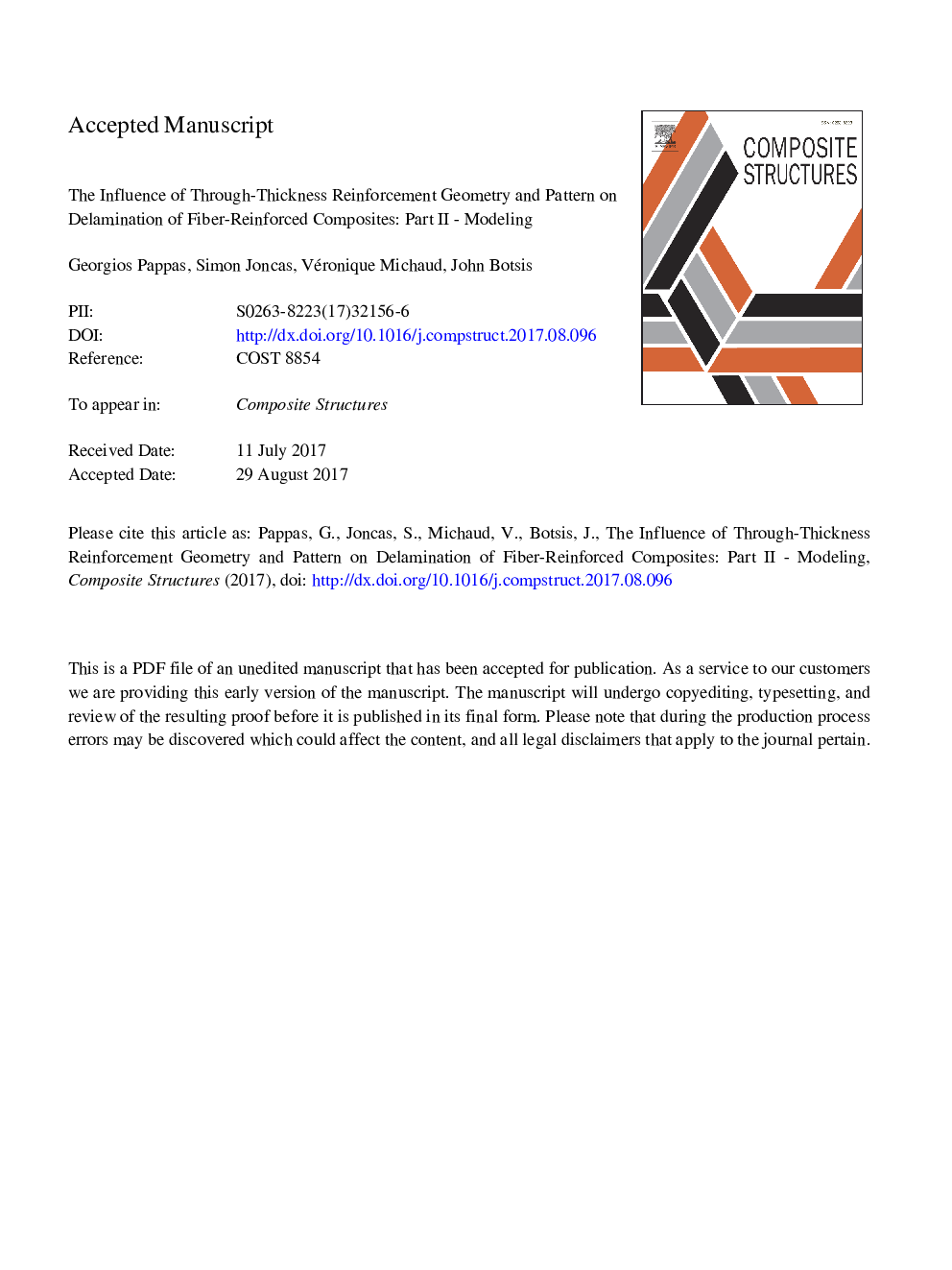| Article ID | Journal | Published Year | Pages | File Type |
|---|---|---|---|---|
| 4917806 | Composite Structures | 2017 | 42 Pages |
Abstract
This article reports modeling techniques and results based on experimental Mode I characterization of a layered woven GFRP material with tufting reinforcement. Standard tuft and loop-less geometries are investigated on three different areal patterns to evaluate their effects on fracture resistance. The experiments reveal that tow/ply and tuft bridging phenomena are present during delamination. The numerical modeling comprises cohesive elements for tow/ply bridging and 1D connector elements for discrete tufts. The traction separation relations for the cohesive model are acquired using an inverse scheme based on strain measurements and the force-separation relations of tuft's failure mechanisms from uniaxial pulling tests on a reference tufting pattern. Results show that tuft's failure mechanism is strongly affected by tufting pattern and geometry while tow/ply bridging contributes 20-30% of the overall fracture energy. The energy absorbed by pull-out of loop-less tufts is approximately twice the fracture energy of standard ones with pull-out triggering much more extensive tow/ply bridging phenomena.
Related Topics
Physical Sciences and Engineering
Engineering
Civil and Structural Engineering
Authors
Georgios Pappas, Simon Joncas, Véronique Michaud, John Botsis,
